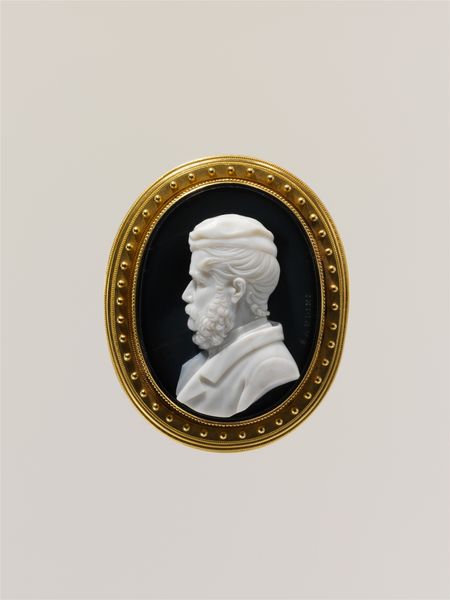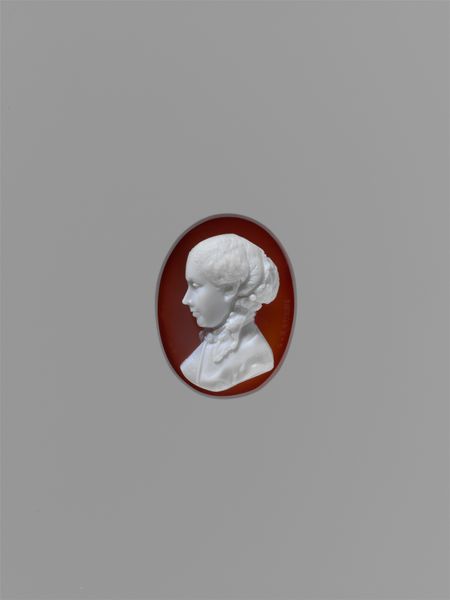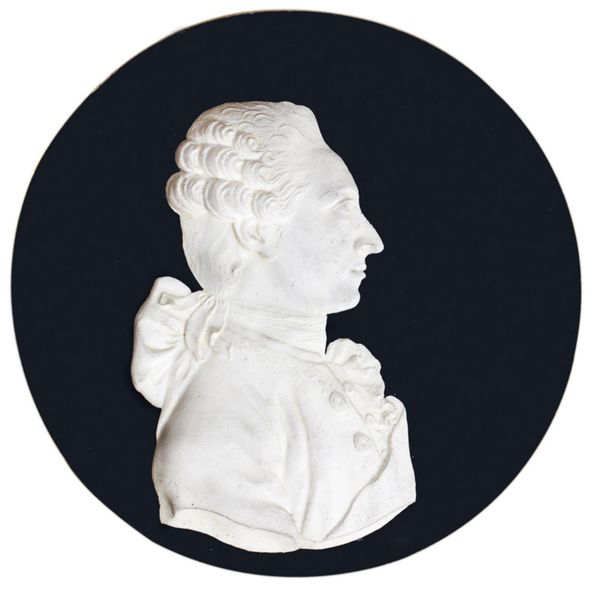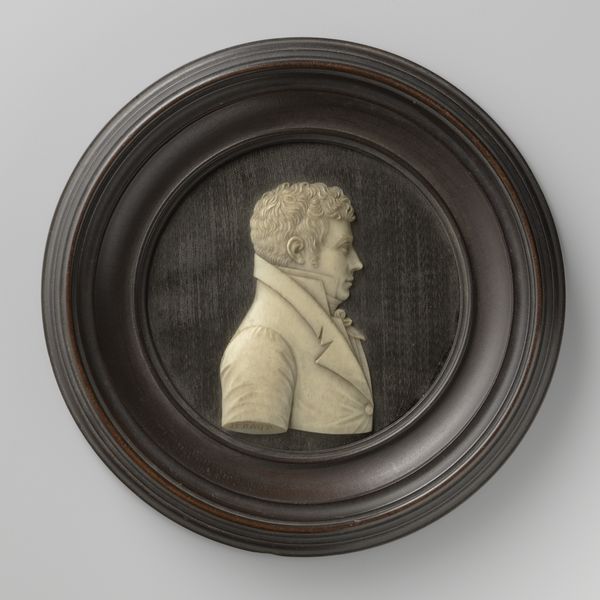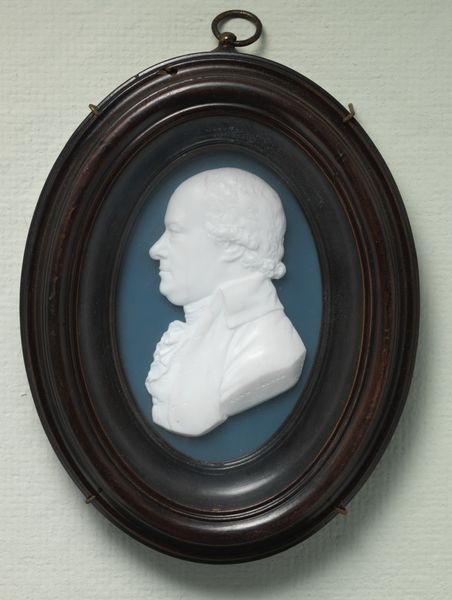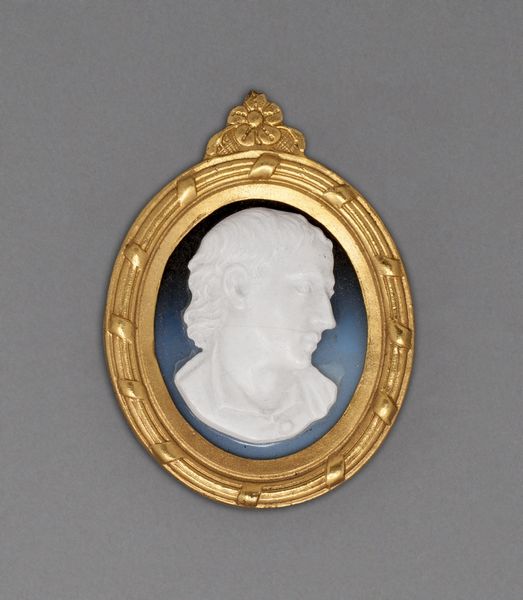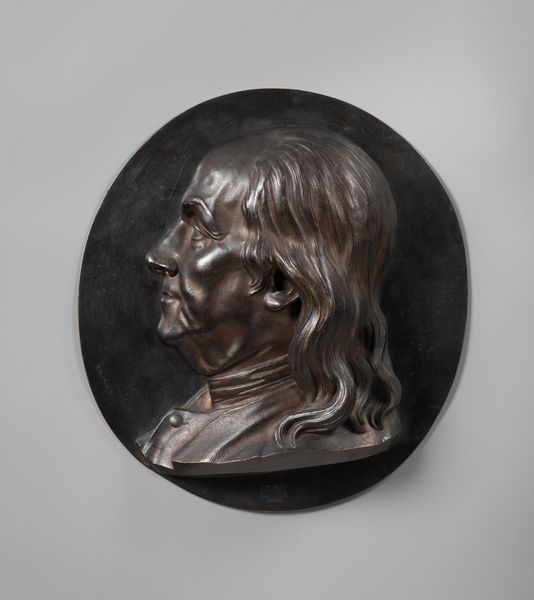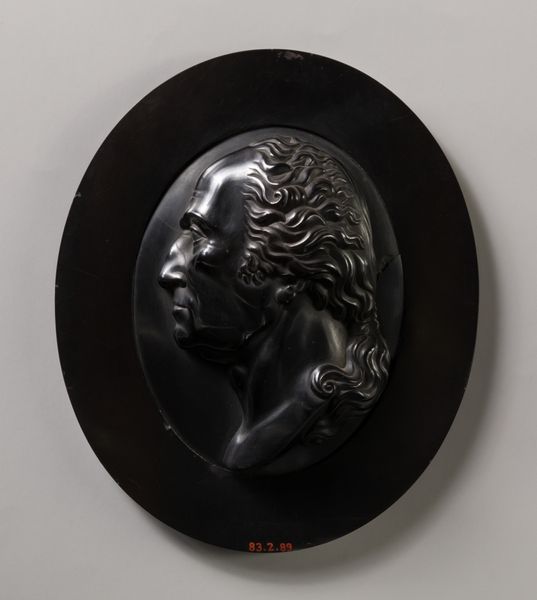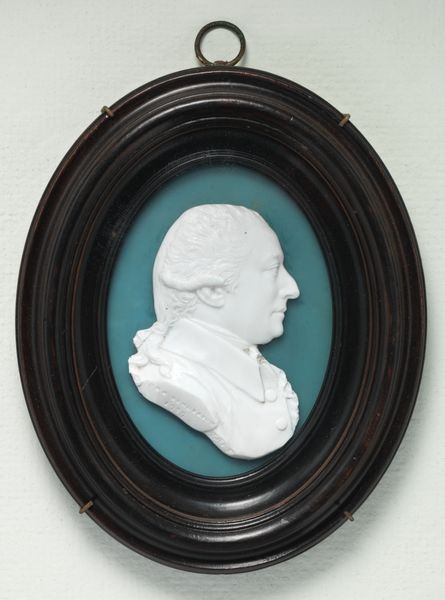
carving, relief, marble
#
portrait
#
neoclacissism
#
carving
#
relief
#
classicism
#
marble
#
profile
Dimensions: 2 1/2 x 2 1/4 in. (6.4 x 5.7 cm)
Copyright: Public Domain
Curator: My first impression is of intense self-regard; that profile against the warm background conveys such composed authority. Editor: Indeed. Here we have an exquisitely crafted marble cameo. Fashioned by George W. Jamison in 1835, this portrait embodies the neoclassical style then ascendant. It's currently held here at The Metropolitan Museum of Art. The relief carving itself presents the profile, encased within an ornate frame. Curator: It is like an icon of civic virtue. The crisp whiteness of the carved figure certainly plays into that, doesn't it? The very image conjures a sort of Roman gravitas. I feel that every detail—down to the elaborate gilded frame—projects power and permanence. Editor: The adoption of classical forms was absolutely deliberate. Throughout Europe and particularly in America, the revolutionary and republican political movements looked back to the Roman Republic for inspiration. Thus, an association of power was formed through symbols. This piece almost certainly speaks to notions of statesmanship and citizenship. Curator: That ornate frame, however beautiful, almost distracts from the purity of the profile. Does that contrast have some significance? It is quite interesting how this frame incorporates both life (leaves) and artifice (metalwork). I wonder about that tension. Editor: Precisely! These cameos often functioned as personal, and very public, statements. By incorporating these elements, the owner actively tied themselves to the political and social values represented. Imagine this piece worn or displayed; it speaks volumes about the wearer’s allegiances and status within their community. It reflects the importance of cultivating a certain image during a period of intense social and political change. Curator: What's most striking to me now is the intimate scale paired with such a bold assertion of public virtue. This little carving embodies grand ideals and personal ambition simultaneously. Editor: I agree. It gives us a potent reminder of how art, even in seemingly modest forms, becomes entangled with the theater of power and politics. We're left pondering what the symbols meant at the time and their subsequent influence.
Comments
No comments
Be the first to comment and join the conversation on the ultimate creative platform.

